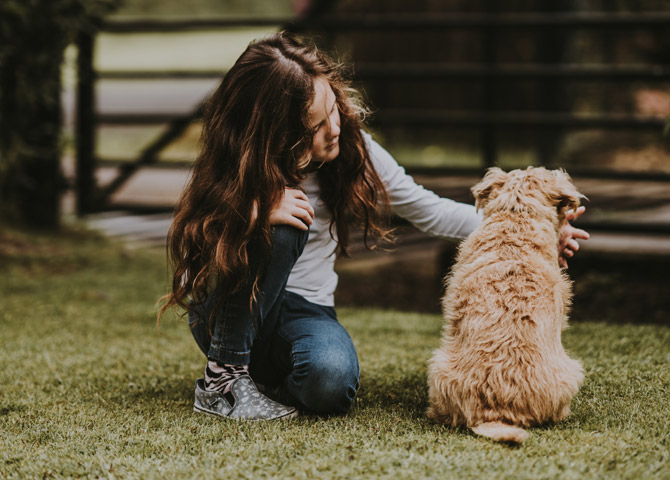As pet professionals, you are often privy to the interactions between pets and their owners. Certainly, when it comes to kids and pets, you can offer practical advice on how to teach children to respect their pets.
Indeed, kids and pets may not always be a match made in heaven, but for the most part, they are a good team. I love seeing my children play with our family pet (a border terrier named Chewie). Seeing the sheer joy on their faces as they interact with him is beautiful. I also love seeing Chewie’s excitement.
However, sometimes I find myself yelling at the kids (particularly the younger two) to “stop winding the dog up” or pleading with them to “please be gentle”.
I’ve warned my youngest child that one day chewie will bite her and explained that it’ll be her own fault. But will it be her fault? Or will it be mine? Despite explaining that yes, Chewie is a very tolerant fur friend but that doesn’t give us the right to torment him—the kids continue to poke the poor dog while he’s sleeping and pull at his legs when he’s simply walking past. This has led me to question how you create a more even playing field when it comes to kids and pets.
Teaching kids and pets to respect each other
Of course, it’s up to us adults to teach kids and pets to get along and, more importantly, to respect each other. Yet, in some cases, this is something that can begin before the family pet comes along.
For example, when you’re walking along the beach or pathway with your child and a dog is walking towards you it’s important to talk to your child about asking permission from the owner before petting the dog.
As pet professionals, there are many opportunities for you to start a conversation about kids and pets and the need to promote pet etiquette.
If an owner brings her new puppy into the veterinary clinic accompanied by her child, make it part of your duty of care to chat about the dos and don’t when it comes to kids and pets.
Helping kids and pets get along: the dos and don’ts
Whether you’re a dog walker, a vet, a pet sitter or you work in a pet store, there are sure to be opportunities to talk about the dos and don’ts of pet etiquette. You could even offer a handout to your clients with kids. Here are a few practical steps to promote.
Don’t approach your pet while it’s eating
No one likes to be disturbed when they’re enjoying their food. This is particularly the case when it’s a juicy bone and there may be the fear that the bone is going to be pulled away from them. In this case, it is the animal’s natural instincts to guard its bone, which might result in a nasty nip.
Do empathise with your pet
Teach kids to always put themselves in the position of their furry pal. Always being rough with the family pet is unkind. It’s highly likely that, eventually, the pet will retaliate.
Don’t disturb a sleeping dog
Of course, if you’re calling a dog to go for a walk he would, no doubt, be more than happy to be woken from his slumber. But when a dog is woken up by being poked and prodded, he’s not going to be happy (and who could blame him!).
Do remember you are bigger than your pet
Yes, there are some dogs that are much bigger than the children in their family but, nonetheless, the dog can still be harmed. Climbing on, trying to ride or lying on top of the pet may cause an injury.
Don’t get in your dog’s face
For some strange reason, kids seem to think it’s funny to put their face in their dog’s face. Why? I have no idea. This can be incredibly irritating for our furry friends.
By having a conversation with clients about kids and pets, you can make sure pet owners with kids are aware of the dos and don’t of pet etiquette. Teaching kids how to interact with pets will hopefully help ensure our furry friends live happier lives. It may also go some way towards preventing dog bites.
Image source: Unsplash/Annie Spratt
Latest posts by Liz Walden (see all)
- Pet health: Medicinal cannabis for pets - December 27, 2021
- What pet business insurance do I need? - November 17, 2021
- Pet sitters: how to take time off - November 15, 2021










Leave A Comment